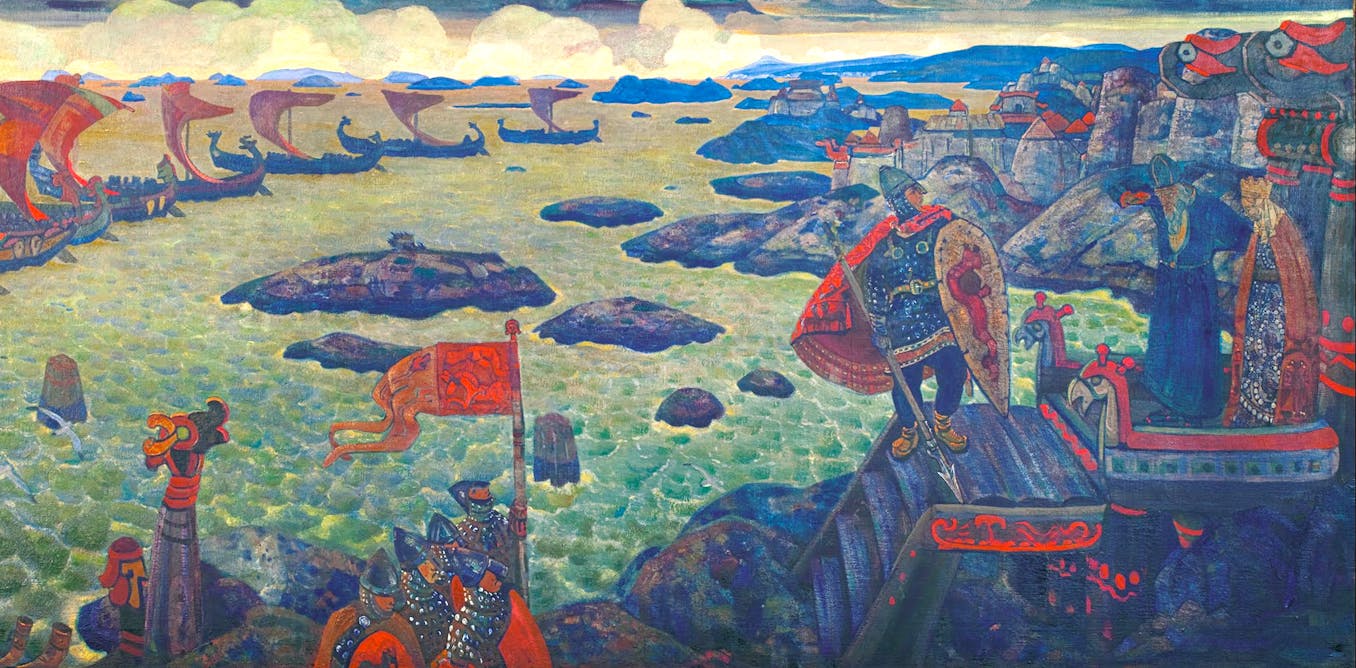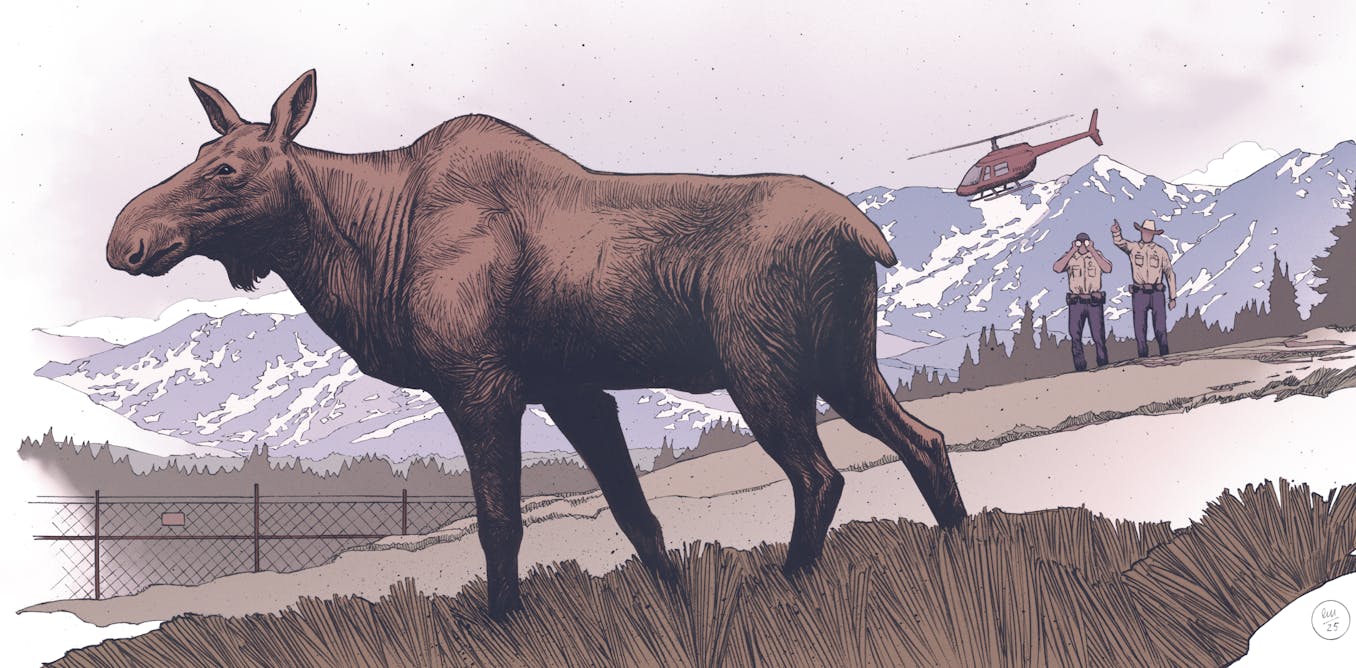A Farmer Discovered a Door in the Ground and What He Saw There Left Everyone AMAZED – This captivating video explores the extraordinary discovery made by a local farmer in the heart of Scotland’s Orkney Islands. Unveiled by a powerful storm, a hidden door led to an underground passage that held a Neolithic settlement dating back over 5,000 years. The excavation of this site, known as Scarab, revealed a complex society that thrived in a landscape shaped by harsh weather and rugged beauty. The discovery of Scarab has not only provided a glimpse into ancient history but has also challenged perceptions of Neolithic life, showcasing the sophistication and resilience of its inhabitants. This remarkable find has sparked ongoing research and speculation, shedding light on the interconnectedness of Neolithic communities and raising questions about sustainability practices and spiritual beliefs. The legacy of Scarab continues to fascinate and inspire, offering a bridge to the past and enriching our understanding of prehistoric civilizations.
Watch the video by Top Discovery
Video Transcript
Wow this is great tell me about this place this is a bual chamber on winter solstice at Sunset the sun streams through this position here and illuminates the back chamber and how Neolithic man managed to build this structure no one really knows in the heart of Scotland’s orcy Islands a
Farmer’s routine day turned extraordinary with the discovery of a hidden door in the ground what lay Beyond this entrance would Captivate and Amaze all unveiling a chapter of ancient history Long buried beneath the Earth the storm that revealed history the orne islands a Windswept archipelago in Northern
Scotland are no strangers to the whims of nature here the Atlantic ocean meets the North Sea creating a climate that is as unpredictable as it is unforgiving it was against this backdrop of rugged natural beauty and harsh weather that an extraordinary Discovery was made in the winter of 18 50 a
Discovery that would peel back the layers of time to reveal a glimpse into Scotland’s ancient past in December of that year a storm unlike any other in living memory swept across the islands known for their Stormy Winters the people of orne were accustomed to the forces of nature however this storm was
Different it brought with it winds of such ferocity and Tide so high that they reshaped the very landscape they battered homes were damaged livestock lost and the people of orc were left to count the cost of Nature’s Fury yet as the storm Abad and the Islanders began the process of recovery something
Remarkable was uncovered in the west of the orne archipelago amidst the devastation a local farmer stumbled upon what appeared to be a doorway leading into the ground this was no ordinary find it was the beginning of a journey into the past that would capture the imagination of the world the door
Revealed by the shifting Sands and Earth upturned by the storm’s violence was an entrance to a Subterranean passage lost to time the local community already dealing with the aftermath of the storm was intrigued by this discovery with the land around them scarred by floods and landslides this doorway offered a
Momentary distraction a mystery to solve when answers to their immediate troubles seemed so elusive the orne Islands formed by the movements of ancient Glaciers are a landscape of Stark Cliffs and deep locks the climate influenced by the Gulf Stream is milder than other regions at similar latitudes but still
The islands are often at the mercy of the elements this unique combination of geography and weather has shaped the life on the islands for Millennia it was this same combination that led to the discovery of the underground door as the forces of nature conspired to reveal Secrets hidden for thousands of years
The initial exploration of the site was cautious the Islanders aware they were on the cusp of something significant began to excavate the area around the door without the means or knowledge to conduct a formal archaeological dig their efforts were rudimentary but driven by a sense of wonder and a
Connection to the land that sustained them what they found was a network of tunnels and Chambers that hinted at a complex society that once thrived in this remote part of Scotland this discovery was just the beginning the underground door opened up a world that challenged the Islanders understanding of their own history it
Was a window into an age long gone preserv beneath the orne soil the storm of 1850 as destructive as it was had inadvertently bridged the present with the past inviting the modern world to explore the ancient as word of the fine spread beyond the islands the significance of the
Discovery began to Dawn on a wider audience here in the remote orne Islands was evidence of a past civilization waiting to be explored the local farmers who first uncovered the door could not have imagined the extent to which their Discovery would Captivate historians archaeologists and the public
Imagination the orne islands a land of Legends and Mysteries perched on the edge of the North Sea where the Atlantic Ocean’s waves crash against rugged Cliffs the orne islands are a tapestry woven with Tales of mystery and Legend This archipelago comprised of around 70 islands of which only 20 are inhabited
Is a place where history and folklore are inextricably inter mind creating a rich cultural heritage that spans thousands of years geographically orne stands as a sentinel at the northernmost Frontier of Scotland separated from the mainland by the tumultuous Waters of the pentland fth this strategic position has made the
Islands a crucial hub for maritime activities throughout history from the Neolithic Traders and Viking Raiders to Modern fishermen and energy companies harnessing the power of wind and wave the landscape of orne is a stark contrast of gentle Rolling Hills dramatic Sea Cliffs and deep wide Skies that have inspired generations of
Artists and writers the historical background of orne is as diverse and fascinating as its landscape the islands have been inhabited for at least 8,500 years initially by Mesolithic and Neolithic tribes who left behind a legacy of remarkable Stone monuments such as the Ring of broader and the standing stones of
Stennis these ancient sites older than Stonehenge and the Great Pyramids of Giza have puzzled historians and archaeologists for centuries their precise purpose remains a subject of debate though they are thought to have served religious or astronomical functions the discovery of the underground door and the subsequent unearthing of a hidden settlement added
A new chapter to oran’s already mysterious past this find was particularly Sensational because it seemed to offer tangible links to the Island’s Neolithic inhabitants providing a direct window window into the lives of people who had walked these lands over 5,000 years ago for a place already steeped in legends of ancient magic and
Mystical power the discovery was more than just an archaeological Milestone it was a revelation that connected the modern orne Community with their deep enigmatic Roots the cultural lore of orne is a blend of Norse and Scottish influences a legacy of the Island’s history of Norse rule until they were
Pledged to Scotland in the 15th century as part of a royal dowery this melding of cultures is evident in the place names folklore and traditions that survive to this day Tales of sea monsters hidden treasures and spectral apparitions are commonplace with each island having its own collection of stories passed down through generations
This backdrop of myth and Legend made the discovery of the underground door all the more thrilling to the people of orne it was as if one of their own Tales had come to life offering a bridge to the ancient world that so deeply influences their cultural identity the possibility that the newly discovered
Settlement could unlock secrets of the past perhaps even explaining some of the Mysteries that have long captivated the imaginations of locals and visitors alike was a source of immense excitement and pride moreover the Island’s mysterious past combined with their geographical isolation has imbued the orne community with a strong sense of
Place and a deep connection to their environment the discovery underscored this relationship highlighting how the landscape of orne is not just a backdrop to life but an active participant in its history the storm that revealed the door was a reminder of the Island’s Dynamic and sometimes volatile nature which has
Shaped human existence here for Millennia the excavation begins in the aftermath of the storm that had reshaped the orcy landscape the local farmers faced the Monumental task of uncovering what lay beneath the mysterious door in the ground armed with little more than curiosity shovels and an indomitable Spirit they embarked on an exploration
That would Bridge the chasm between the present and a distant past the initial efforts to excavate the site were driven by a combination of necessity and wonder the storm had not only revealed the underground entrance but had also wrought havoc on the farmers lands displacing soil and sand and massive
Quantities as they began to clear the debris to salvage their fields the farmers realized that the door way could be an entrance to one of the many ancient structures that dot the orne landscape perhaps even something wholly unknown however the excavation was hampered by the lack of modern machinery
And archaeological expertise the farmers were Pioneers not professional archaeologists and their tools were suited to agriculture rather than the delicate task of unearthing ancient ruins despite these limitations their work laid the foundation for what would become one of the most significant archaeological discoveries in Scotland not being able to apply for research
Grants like the the the European research Council the Turning Point came in 1927 with the arrival of Gordon child a renowned Australian archaeologist whose interest in the orne islands was peaked by reports of the farmers Discovery child then a professor of prehistoric European archaeology at the University of Edinburgh recognized the
Potential significance of the site and assembled a team equipped with the necessary expertise and tools to conduct a ER excavation under child’s Guidance the excavation took on a new Direction his team systematically removed the layers of Earth and sand that had protected the underground structure for Millennia as the excavation progressed
It became clear that this was no ordinary find the site was not just a single structure but a complex of buildings streets and artifacts that offered a snapshot of Neolithic life unprecedented in its completeness and preservation child’s work at the site which would later be known as Scarab
Revealed a settlement that had been occupied over 5,000 years ago predating the Great Pyramids of Egypt and Stonehenge the architectural and cultural significance of Scarab was immense providing insight into the daily lives of its Neolithic inhabitants with Clarity seldom found in prehistoric sites the structures Unearthed at scarra were remarkably sophisticated for their
Time featuring stone-built houses with Central hearths beds and even Furniture such as dressers these dwellings were interconnected by a series of covered passages suggesting a community that valued social cohesion and protection from the harsh organy climate the discovery of various artifacts including Pottery tools and jewelry further enriched the
Understanding of Neolithic society and its capabilities Gordon child’s role in the excavation of Scarab cannot be overstated his expertise and methodical approach transformed a curious find by local farmers into a landmark archaeological Project childes work at Scarab set new standards for prehistoric archaeology demonstrating the importance of careful excavation and Analysis in
Uncovering the stories of ancient peoples the significance of Scarab extends Beyond its archaeological value it has become a symbol of human resilience and Ingenuity the settlement’s preservation under layers of sand and Earth speaks to the dynamic relationship between humans and in their environment a theme that resonates
Deeply in the orne islands for the farmers who first discovered the door in the ground the excavation affirmed their connection to a lineage of people who had lived and thrived on the same land thousands of years before Scarab the Scottish Pompei nestled on the Windswept shores of orne the discovery of Scarab
Unearthed a Neolithic Village so well preserved that it has been rightfully dubbed the Scottish Pompei unlike the Italian city Frozen in Time by volcanic ash Scarab lay hidden under sand for Millennia until the storm of 1850 peeled back the layers of time this remarkable site offers a vivid snapshot of Life
Over 5,000 years ago predating the construction of the pyramids of Egypt and Stonehenge and stands as a testament to the Ingenuity and resilience of its Neolithic inhabitants the architectural sophistication of Scarab bre is immediately apparent The Village consists of eight stone dwellings linked together by a series of low
Passages these structures were built into a large midden a prehistoric garbage dump that provided excellent insulation against ory’s harsh weather the walls of the houses were constructed from large slabs of stone without the use of mortar and each was entered through a low doorway that could be
Blocked with a stone slab likely for both warmth and security inside the dwellings reveal a level of domestic comfort and societal organization that challenges modern perceptions of Neolithic life each house house follows a similar layout with a central hearth stone beds and storage spaces the presence of stone dressers
Positioned opposite the entrance and often regarded as a kind of spiritual or ritual focal point suggests a society with established cultural practices and beliefs these dressers alongside the discovery of carved Stone balls jewelry and pottery indicate a community that valued both function and form merging the Practical needs of daily life with a
Sense of aesthetic and possibly spiritual significance the settlement’s design reflects a deep understanding of Community Living and environmental adaptation the interconnected houses and shared walls minimized exposure to the elements and maximized warmth the central Hearth in each dwelling was not just a source of heat but a communal space for cooking
Working and social interaction this architectural Arrangement suggests a society that prioritize social cohesion with each household contributing to the larger community structure why Scarab has been likened to Pompei is not merely due to its preservation but because it offers a freeze frame of Neolithic life just as Pompei provides insights into
Roman society Scarab bra sheds light on Neolithic practices economy and social organization the artifacts found within the Village from Sophisticated Stone tools to ornamental objects speak to a society that was both technologically Adept and culturally Rich the variety and craftsmanship of these items suggest a community with skilled Artisans
Capable of not only meeting their material needs but also expressing themselves through art and decoration one of the most intriguing aspects of Scarab is its apparent sudden abandonment similar to Pompei The Village gives the impression of a community that vanished in haste leaving behind the utensils and possessions that
Had filled their daily lives while the reasons behind this abandonment remain a subject of speculation it adds a layer of mystery to the site prompting questions about the challenges these ancient people faced and what ultimately LED them to leave their homes the societal advancements observed at Scarab are remarkable The Village’s layout and
The uniformity of the houses suggest a level of planning and social organization that belies the often simplistic view of neolithic communities the presence of a drainage system and evidence of waste management practices indicate an understanding of Public Health and environmental sustainability that was far ahead of its time moreover
The apparent division of labor as inferred from the variety of tools and artifacts found points to a complex economy where different individuals or groups specialized in various crafts and activities the significance of scarra extends Beyond its architectural and societal advancements it challenges our understanding of prehistoric life
Offering a glimpse into a society that was both complex and sophisticated The Village’s preservation allows us to appreciate not just the structures these people built but the lives they lived within them Scara Bray stands as a Monument to human resilience creativity and the enduring desire to shape our environment and
Society life in ancient orne Scarab nestled within the heart of the orne archipelago provides a rare lens through which we can view the daily life of its ancient inhabitants this Neolithic Village preserved under layers of sand from Millennia offers insights into a community that thrived in a landscape both beautiful and harsh the
Engineering Marvels and sophisticated infrastructure of Scara BR reflect a people Adept at overcoming the environmental challenges they faced revealing a society that was Innovative resilient and deeply connected to its surroundings the daily life in Scarab was undoubtedly shaped by the climate of orne characterized by cold wet Winters and Mild Summers the inhabitants
Constructed their homes with thick stone walls and insulation using the Earth itself to Shield against the elements each dwelling was equipped with a central Hearth providing warmth and light around which daily activities would revolve these hearths were not merely functional but served as the heart of the home where meals were
Prepared tools were crafted and stories were shared fostering a sense of community and belonging the layout of Scarab with its interconnected dwellings speaks to a society that valued communal living while maintaining individual family spaces this balance between privacy and Community might have been key to their survival allowing for the efficient
Distribution of resources and shared responsibilities the presence of designated workshops within the village suggests a division of labor with individuals specializing in tasks such as tool making pottery and perhaps weaving although no textiles have survived the passage of time one of the most remarkable aspects of Scara BR is its sophisticated infrastructure
Particularly its drainage system each house featured a stone lined drain that led outside a striking example of Neolithic engineering this system not only provided sanitation but also demonstrated an advanced understanding of Environmental Management the drainage system coupled with evidence of stone built furniture and organized Living Spaces showcases a level of
Domestic sophistication that challenges modern perceptions of Neolithic Life The Mysterious disappearance of the scar inhabitants has puzzled historians and archaeologists for decades several theories have been proposed ranging from environmental changes to social upheaval one plausible explanation is the deteriorating climate as the orne islands faced increasingly severe storms and colder temperatures the conditions
That had once supported the flourishing community of Scarab BR may have become untenable the struggle to maintain crops and livestock in such a climate could have led to a gradual abandonment of the village another theory suggests that the inhabitants of Scarab might have been forced to leave due to a rise in sea
Levels or a catastrophic natural event such as a tsunami which are not uncommon in the geological history of the region the suddenness of their departure implied by the belongings left behind in the dwellings supports the idea of a rapid and unplanned Exodus the social structure of Scarab may also offer Clues to its
Abandonment while the village exhibits signs of a tightly knit community it is possible that internal conflicts or changes in social hierarchy led to its decline the absence of clear evidence for a ruling class or religious Elite suggests a society that was relatively egalitarian but this does not preclude the possibility of social tensions
Arising from resource scarcity or external threats the Legacy and Mysteries unveiled the discovery of Scarab BR in the orne islands has been a Cornerstone in unraveling the tapestry of Neolithic life in northern Europe this remarkably preserved Village has not only provided a tangible connection to our ancestors but also reshaped our
Understanding of prehistoric societies the broader impact of scarra’s Discovery extends Beyond its immediate archaeological significance influencing how we perceive the sophistication resilience and Ingenuity of neolithic communities Scara bra’s excavation revealed a society that was far from primitive the architectural Ingenuity Advanced societal organization and evidence of a complex economy challenged
The notion of Neolithic people as mere hunter gatherers living at the mercy of their environment instead we see a community capable of detailed planning environmental adaptation and a rich cultural life suggesting a level of sophistication that parallels if not surpasses that of contemporary civilizations in other regions the ongoing archaeological efforts in orany
And Beyond continue to uncover evidence that further enriches our understanding of Neolithic civilizations excavations at other sites in Scotland such as the Ness of bradar have revealed similarly complex societies with Monumental architecture intricate artwork and evidence of extensive trade networks these discoveries underscore the interconnectedness of neolithic communities across Scotland and
Potentially across wider regions of Northern Europe despite these advances numerous unanswered questions remain about Scarab and Neolithic Societies in general the reasons behind the sudden abandonment of scarra still elude historians and archaeologists while theories abound from environmental catastrophes to social upheaval definitive evidence is scarce this mystery adds a layer of
Intrigue to the site fueling ongoing research and speculation another area of ongoing investigation is the extent of interaction between Scarab and other contemporary neolithic communities the similarities in architectural Styles burial practices and artifacts across different sites suggest just a shared cultural framework or direct communication between these communities
Determining the nature and extent of these connections could provide invaluable insights into the social and political landscape of Neolithic Europe the legacy of Scarab BR also raises questions about the sustainability practices of Neolithic societies the careful management of resources evident in The Village’s infrastructure offers lessons for modern societies grappling with environmental
Challenges understanding how Scara Brave inhabitants maintained a balance with their environment could inform contemporary approaches to sustainability and conservation furthermore the spiritual and cultural life of Scarab bra’s inhabitants remains a topic of Fascination the significance of artifacts such as carved Stone balls and symbols is still debated with interpretations ranging from purely
Decorative to deeply spiritual or symbolic unraveling the meanings Behind These objects could offer a glimpse into the beliefs values and social structures of neol ethic communities
Video “A Farmer Discovered a Door in the Ground and What He Saw There Left Everyone AMAZED” was uploaded on 02/08/2024 to Youtube Channel Top Discovery





























